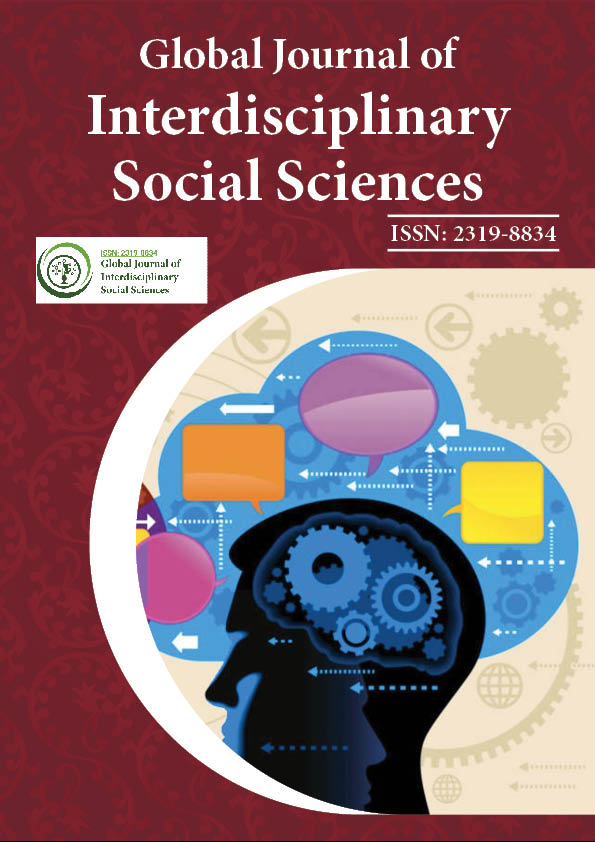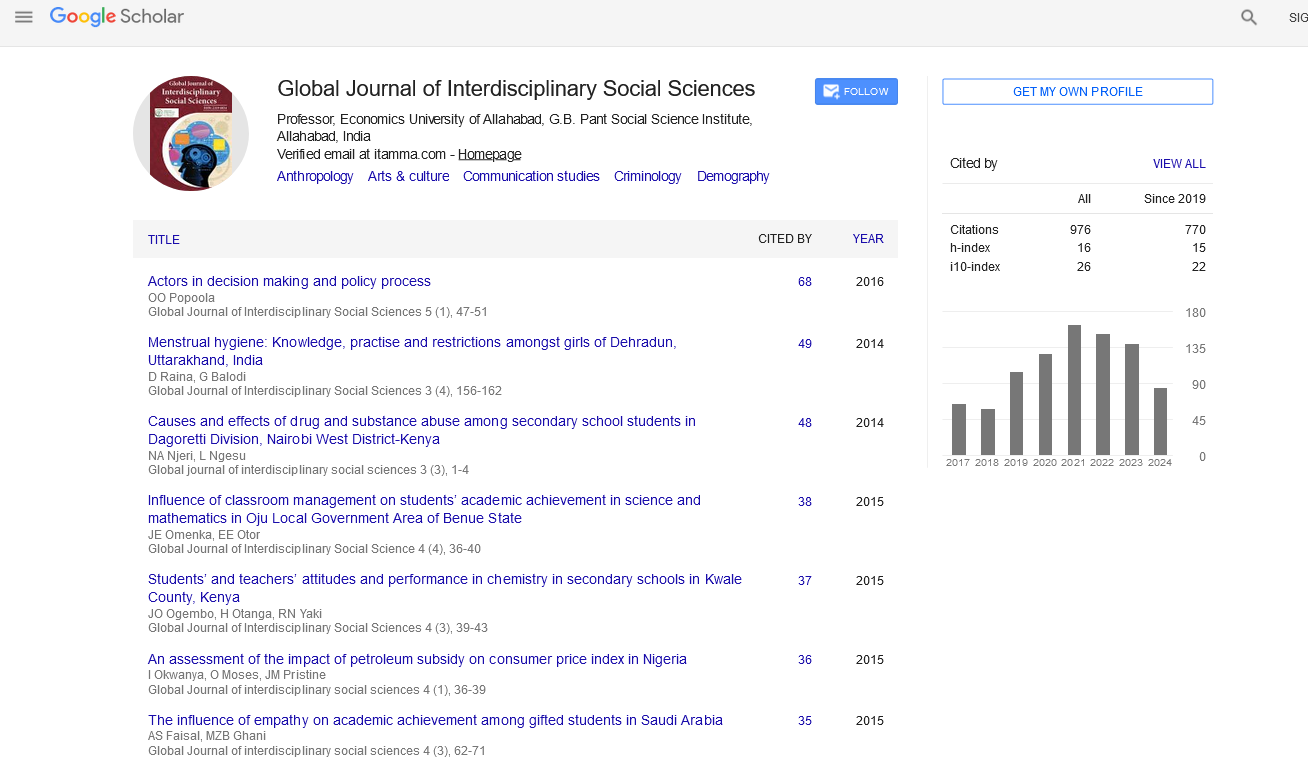Indexed In
- JournalTOCs
- Google Scholar
Useful Links
Share This Page
Journal Flyer

Open Access Journals
- Agri and Aquaculture
- Biochemistry
- Bioinformatics & Systems Biology
- Business & Management
- Chemistry
- Clinical Sciences
- Engineering
- Food & Nutrition
- General Science
- Genetics & Molecular Biology
- Immunology & Microbiology
- Medical Sciences
- Neuroscience & Psychology
- Nursing & Health Care
- Pharmaceutical Sciences
Perspective - (2023) Volume , Issue
Drug Trafficking: Relationship between Drugs and Crime
Richard Scott*Received: 27-Jan-2023, Manuscript No. GJISS-23-19688; Editor assigned: 31-Jan-2023, Pre QC No. GJISS-23-19688 (PQ); Reviewed: 14-Feb-2023, QC No. GJISS-23-19688; Revised: 05-Apr-2023, Manuscript No. GJISS-23-19688 (R); Published: 12-Apr-2023
Introduction
Congress mandated the National Institute of Justice (NIJ) to collaborate with the national institute on drug abuse in order to study the relationship between drug use and criminal activity in 1976. This report assessed the body of research on drug use patterns, criminal behavior, and the impact of drug treatment treatments on criminality in order to prepare for the NIJ's 1987 launch of its Drug Usage Forecasting (DUF) programme. DUF measured and observed drug use among those who had been arrested in order to produce accurate and recent data on drug use in relation to the criminal justice system. The Arrestee Drug Abuse Monitoring (ADAM) programme was created by the National Institute of Justice on drug abuse (NIJ) after a decade of data collection, boosting the accuracy of its yearly estimates of drug use prevalence. Up until 2003, ADAM was in operation. The information from these two NIJ projects served as the cornerstone for comprehending how drug usage has changed over time and across geographical boundaries.
The national institute on drug abuse has invested significant resources on original research on ways to cut down on drug usage in addition to analyzing drug use trends. Studies conducted by NIJ funding in the 1990’s demonstrated that drug treatment may be effectively integrated into the criminal justice system to reduce the influence on crime. NIJ started evaluating a variety of drug treatment options for those who had been convicted of crimes, including drug courts, residential drug treatment prison programmes, intense probation supervision, and system wide strategies, based on these findings. Over the past ten years, the NIJ's drug and crime portfolio has concentrated on crime reduction through research into drug related crime prevention and intervention measures, market disruption and destabilisation strategies, and technologies for better drug detection and recognition.
Description
The following are some of the reasons that link drug trafficking to violence. Market and consumer competition for drugs. Disputes and fraud among those who are involved in the black market for drugs. Drug traffickers are violent people who often resort to violence. Street drug markets are often found in economically and socially underprivileged neighbourhoods, where social and legal measures to prevent violence are frequently ineffectual. Due to the growing usage of lethal firearms, drug related violence has likely become deadlier in recent years.
In 1988, BJS looked at homicides in the 75 most populous counties in the US. Numerous murders have drug related or drug trafficking related elements, such as drug production, drug related disputes, drug money theft, drug scams, poor drug deals, retribution for drug theft, or illegal drug use. 18% of defendants and 16% of victims had one of these variables at play.
Conclusion
The evidence indicates that drug users are more likely than nonusers to commit crimes, that arrestees and were often under the influence of a drug at the time they perform their offense, and that drug trafficking generates violence. Assessing the nature and extent of the influence of drugs on crime requires that reliable knowledge about the crime and the offender is available, and that definitions be consistent. In face of complicated evidence, it is impossible to say quantitatively how much drugs influence the occurrence of crime.
Citation: Scott R (2023) Drug Trafficking: Relationship between Drugs and Crime. Global J Interdiscipl Soc Sci. 12:054.
Copyright: © 2023 Scott R. This is an open access article distributed under the terms of the Creative Commons Attribution License, which
permits unrestricted use, distribution, and reproduction in any medium, provided the original author and source are credited.

